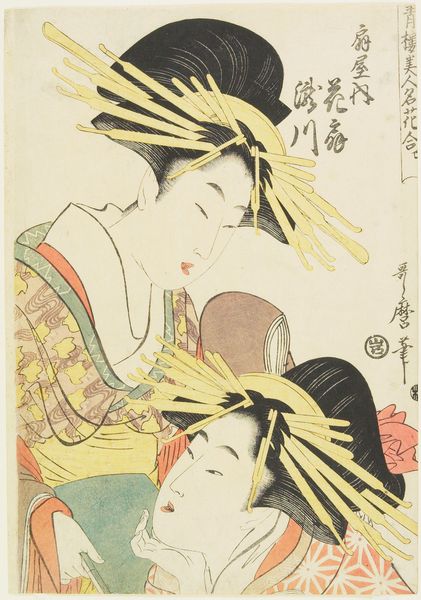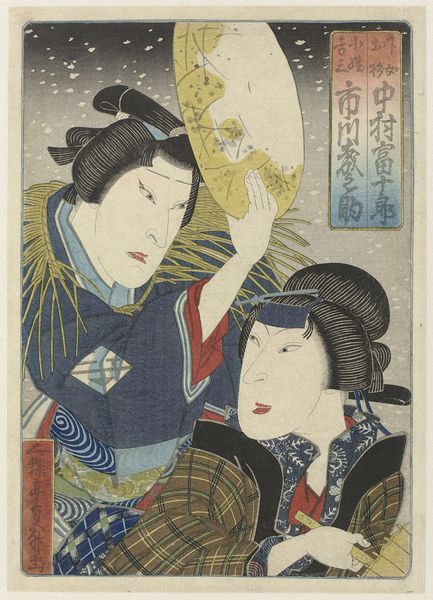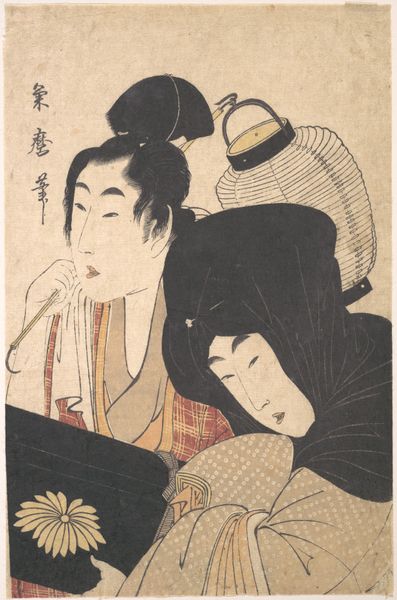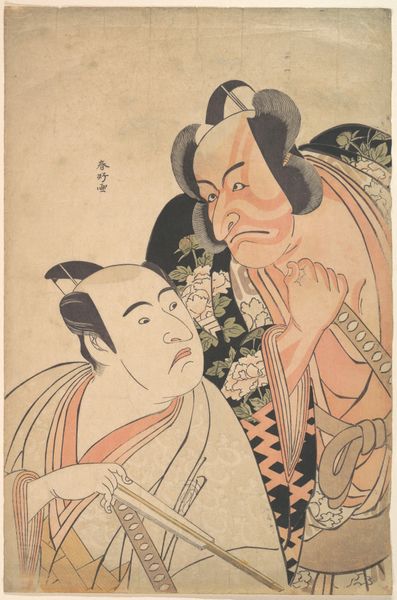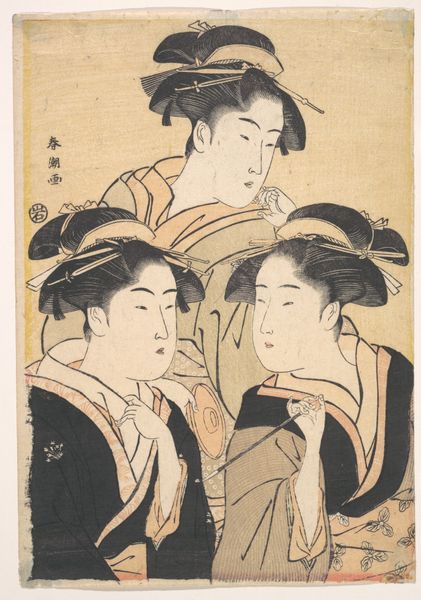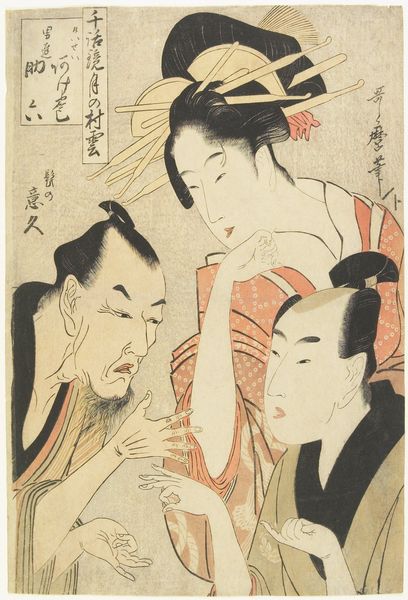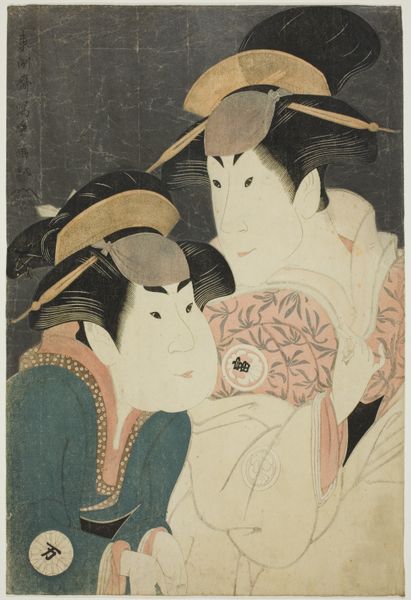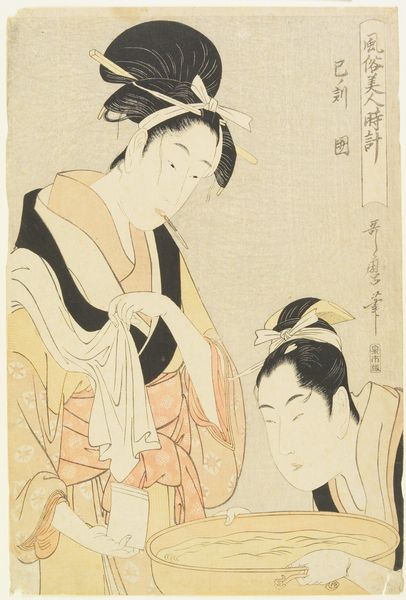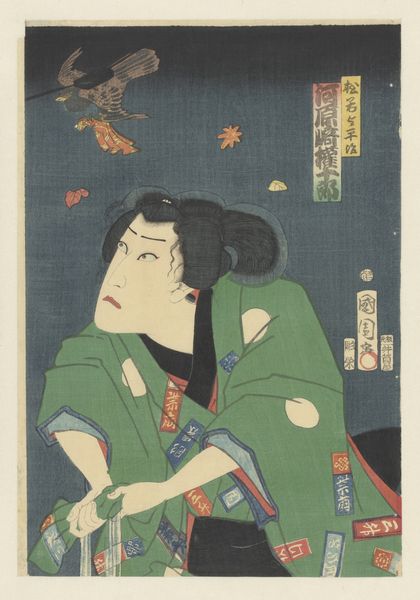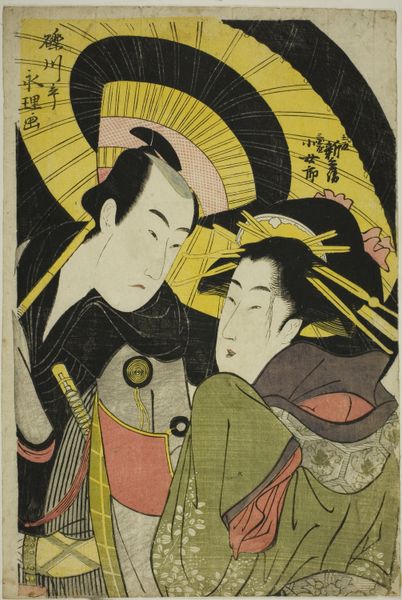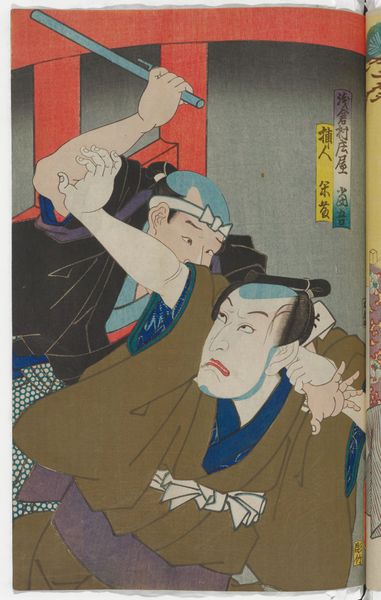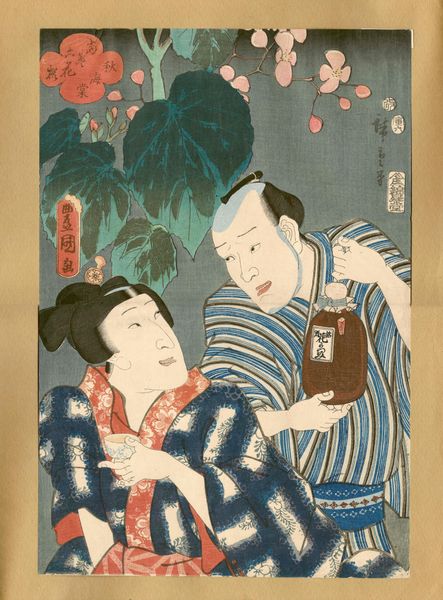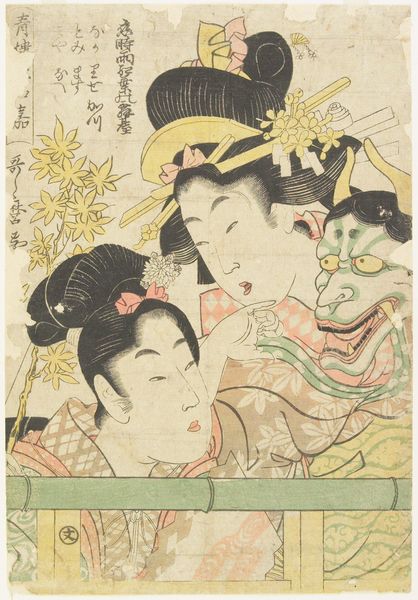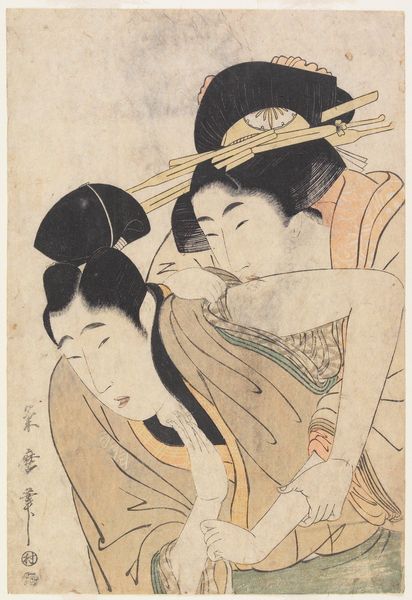
Actors Ichikawa Shōchō II as Umegawa and Kataoka Gadō XII as Chūbei 1927
0:00
0:00
Dimensions: 15 3/16 × 10 1/16 in. (38.58 × 25.56 cm) (image)23 × 19 × 1 1/2 in. (58.42 × 48.26 × 3.81 cm) (outer frame)
Copyright: No Known Copyright
Curator: I find the expressions in this piece so intriguing, they remind me of those silent film stars conveying depth with a minimum of movement. Editor: Well, let's provide our listeners with a bit more context. This is "Actors Ichikawa Shōchō II as Umegawa and Kataoka Gadō XII as Chūbei," a woodblock print created in 1927 by Natori Shunsen, now residing here at the Minneapolis Institute of Art. What draws you particularly to the actors' expressions? Curator: The woman, Umegawa, exudes this air of melancholic resignation; while Chūbei, his gaze sharp, seems to hint at a contained fury. There's so much tension embedded in those subtle shifts in the eyes, mouth, even the angle of the head. Editor: Agreed, Shunsen masterfully employs the traditional Ukiyo-e style here, particularly the ‘yakusha-e,’ or actor print tradition. The dramatic makeup is fascinating and an essential code for the theatergoers, as the symbolism is deeply embedded. Curator: Absolutely. The powdered faces and sharply defined features were so integral to Kabuki theatre and allowed audiences to immediately identify not just the characters but their emotional state as well. These aren't merely portraits; they're visual representations of well-known character archetypes within a specific performance. Editor: Considering that Ukiyo-e prints were a key means of disseminating information and promoting cultural events, it would suggest that theater was a crucial space in culture to form the individual psyche through accessible characters. The performance would shape, even validate or reinforce the norms of that society. The caricature style could almost give permission to audiences to experience vicariously emotions that might be too challenging to recognize directly in themselves. Curator: A persuasive observation that art is essentially always political in both senses: reflecting and affecting its culture, particularly on something as widely accessible as these prints. I see so much being said about the human drama here, beyond even the specificity of these named actors. Editor: Looking at it now, I’m reminded about how crucial understanding the symbols are. With their visual language and accessible format they made it possible to convey complex social meanings at a scale rarely possible before or since. Curator: Precisely! And Shunsen does this so well here, condensing narrative and emotional intensity into these static portraits. Editor: Yes. A true snapshot of a culture grappling with representation and selfhood in a quickly modernizing world, wouldn't you agree?
Comments
minneapolisinstituteofart almost 2 years ago
⋮
Twenty-third design of a set of 36. Actors Ichikawa Shōchō II (1886-1940) as Umegawa and Kataoka Gadō XII (1882-1946) as Chūbei in the play "A Message of Love from Yamato" (Koi bikyaku Yamato orai 恋飛脚大和往来). Chūbei is in love with the prostitute Umegawa and embezzles public money entrusted to him to buy her contract. The couple then decides to commit ritual suicide together before Chūbei can get arrested.
Join the conversation
Join millions of artists and users on Artera today and experience the ultimate creative platform.
